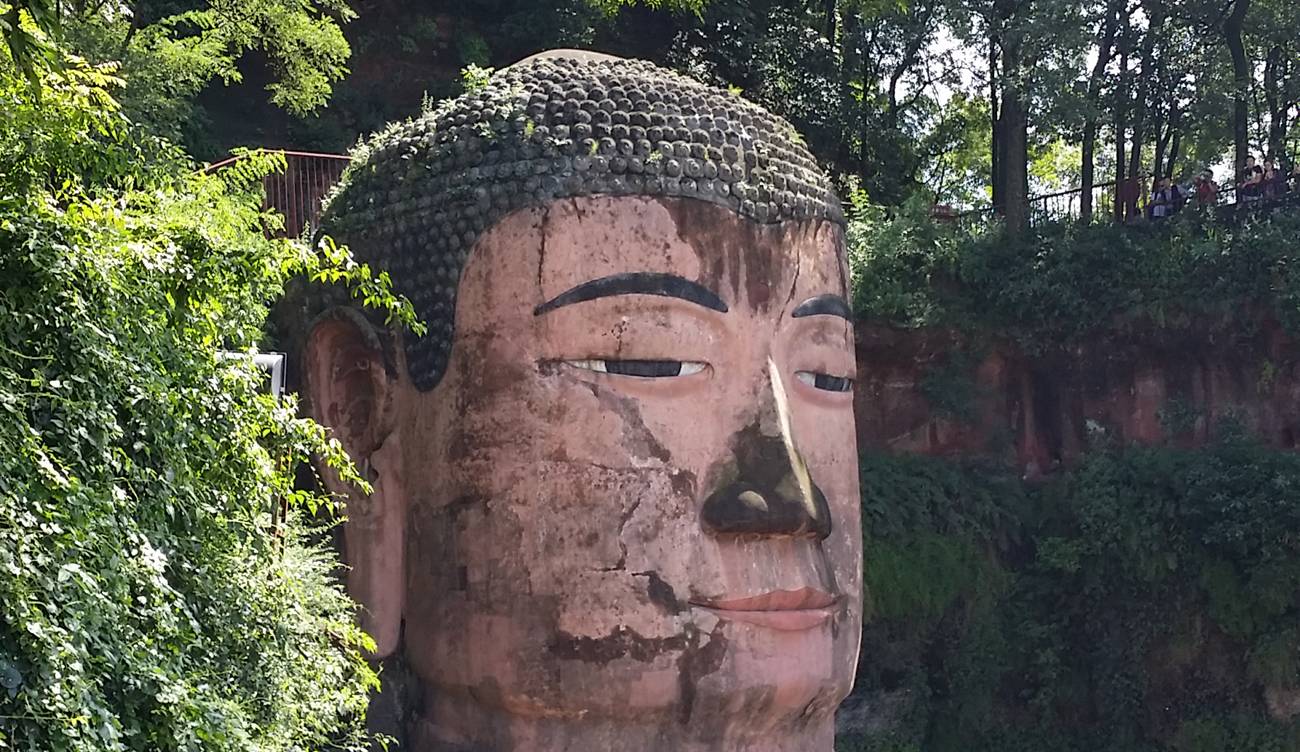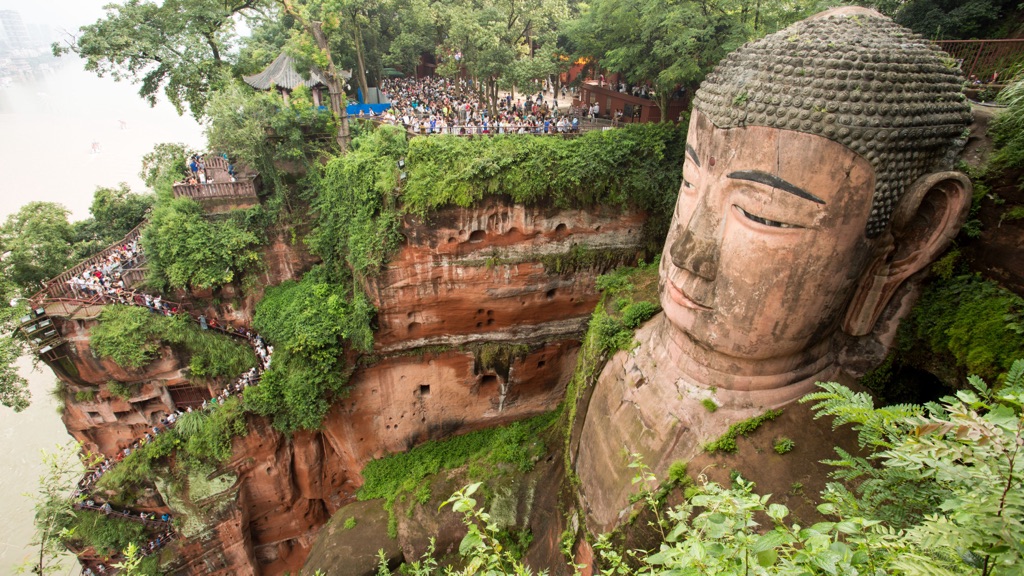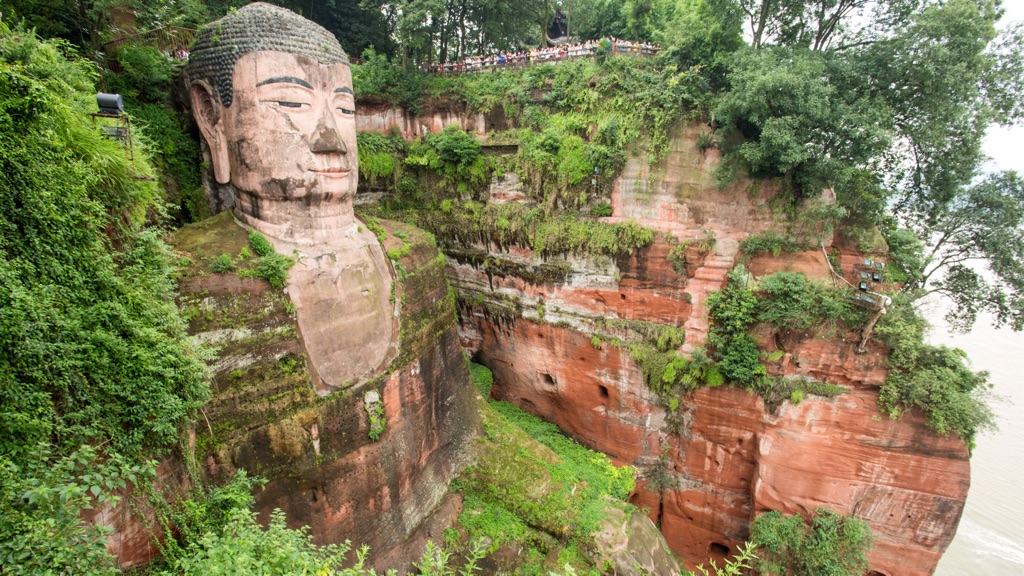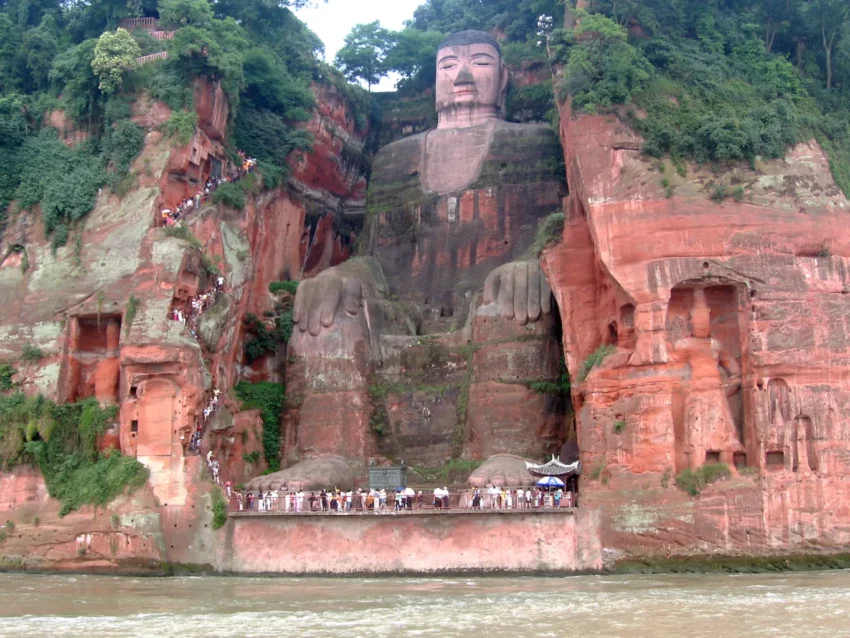The Leshan Giant Buddha is a monumental statue carved into the side of Mount Lingyun in Sichuan Province, China. Towering at 71 meters (233 feet) tall, it represents Maitreya Buddha and overlooks the confluence of three rivers. It is the largest stone Buddha in the world and a masterpiece of Buddhist art. The construction began in 713 AD, led by a Chinese monk named Haitong, and was completed in 803 AD, long after his death. This colossal structure is not only a significant religious symbol but also an incredible feat of engineering. It has been a UNESCO World Heritage Site since 1996, attracting visitors from around the globe.
Get your dose of History via Email
Historical Background of Leshan Giant Buddha
The Leshan Giant Buddha was discovered by the western world in the early 20th century. However, its history dates back to the Tang Dynasty. The project was initiated by Monk Haitong, who hoped the Buddha would calm the turbulent waters that plagued shipping vessels. After Haitong’s death, funding for the project waned, but eventually, it was completed thanks to the efforts of his disciples and local governors. The site has seen various restoration efforts over the centuries and has withstood the test of time, surviving natural and human-induced threats.
Monk Haitong began the project, but it was the collective effort of thousands that brought it to completion. The statue’s construction was an arduous task that took nearly 90 years. The Leshan Giant Buddha has since stood as a sentinel, witnessing the ebb and flow of dynasties and the evolution of the surrounding landscape. It has remained a significant pilgrimage site for Buddhists and a testament to the region’s rich cultural history.

Throughout its history, the Leshan Giant Buddha has not only been a religious monument but also a cultural icon. It has attracted visitors and pilgrims alike, contributing to the local economy and culture.
Despite its serene appearance, the Leshan Giant Buddha has faced challenges, including weathering and erosion. Conservation efforts have been ongoing to preserve this ancient wonder. The site’s significance is recognized not only for its religious importance but also for its historical and artistic value. It serves as a bridge between the past and the present, connecting visitors to the rich tapestry of Chinese history.

About Leshan Giant Buddha
The Leshan Giant Buddha is a marvel of religious art and engineering. Carved directly into the cliff face, the statue is made of soft sandstone, which allowed for detailed carving but also requires careful preservation. The Buddha’s features are proportionate and serene, with intricate details such as coiled hair and flowing robes. The statue includes a drainage system to prevent water damage, a feature that showcases the ingenuity of its creators.
Construction techniques of the Leshan Giant Buddha were advanced for its time. Workers had to remove 1,000 cubic meters of rock, and the project was an early example of cooperative labor in ancient China. The statue’s design integrates with the natural landscape, creating a harmonious balance between human craftsmanship and the environment.

The Buddha’s massive size is awe-inspiring: it stands 71 meters tall, with an 8-meter-long finger and a 9-meter-wide instep that can accommodate over a hundred people. The architectural highlights of the Leshan Giant Buddha are not only in its size but also in the intricate details and the overall composition that blends seamlessly with the surrounding cliffs and rivers.
The materials used in the construction of the Leshan Giant Buddha have contributed to its longevity. The sandstone is susceptible to erosion, but the statue’s builders ingeniously included a drainage system within the folds of the Buddha’s robes and hair, which has protected the statue from serious water damage over the centuries.
The Leshan Giant Buddha’s architectural significance lies in its design, which reflects both the aesthetic values and the spiritual beliefs of the time. The statue’s presence has a profound impact on the landscape, creating a focal point that draws the eye and inspires contemplation. It is a testament to the skill and devotion of its creators, who managed to carve such a serene and imposing figure from the living rock.
Theories and Interpretations
The prevailing belief is that the statue was created to calm the turbulent waters of the river, as evidenced by historical records. However, some suggest that the Buddha was also meant to serve as a spiritual guardian for the people living in the area.
The statue’s intricate details have led some to speculate about the influence of other cultures on its design, although these theories are not widely accepted.

Historical records match the statue to the period of its creation, but there is still much to learn about the Leshan Giant Buddha. Dating of the statue has been carried out primarily through historical texts and the examination of the stratigraphy of the rock layers. These methods have helped to confirm the age of the statue and the timeline of its construction.
The Leshan Giant Buddha continues to be a subject of study for historians and archaeologists. As new technologies emerge, such as 3D scanning and advanced conservation techniques, our understanding of this ancient wonder may deepen, revealing more about its creators’ intentions and the statue’s significance in Chinese cultural history.
At a glance
Country: China
Civilization: Tang Dynasty
Age: Constructed from 713 AD to 803 AD


Very interesting article. More details (about specifically how the drainage was engineered, and why/how the rivers were considered “turbulent” – i.e. boats were being capsized? People were dying?) would add to the article.
I am getting more and more interested in Neural Pathways.
The ancients – Babylonian, Mesopotamian, Persian, Egyptian, Indian, Mayan or the Chinese – extreme engineering seems a common passion, pointing to the human aspiration to rise above. It continues with the Burj khalifa, Sears tower, the Petronas or even the Statue of Liberty or the Statue of Unity in Gujarat, India. One exception is the regressive ideology of the Taliban that insensibly destructed the Bamiyan Buddha which could’ve been a cousin of the Leshan Giant Buddha. Hope such heritages would not come on the way of inhuman ideologies…